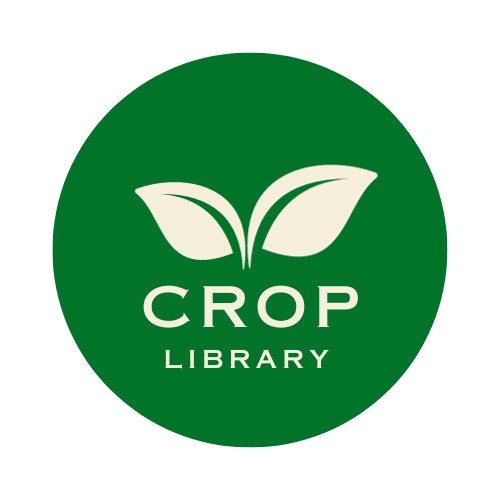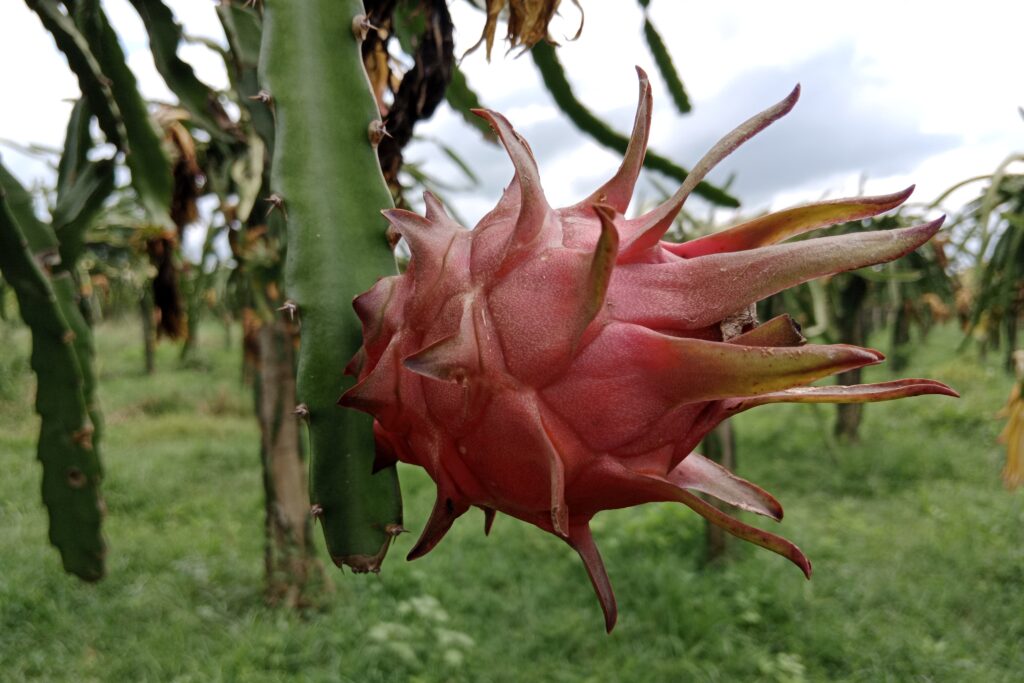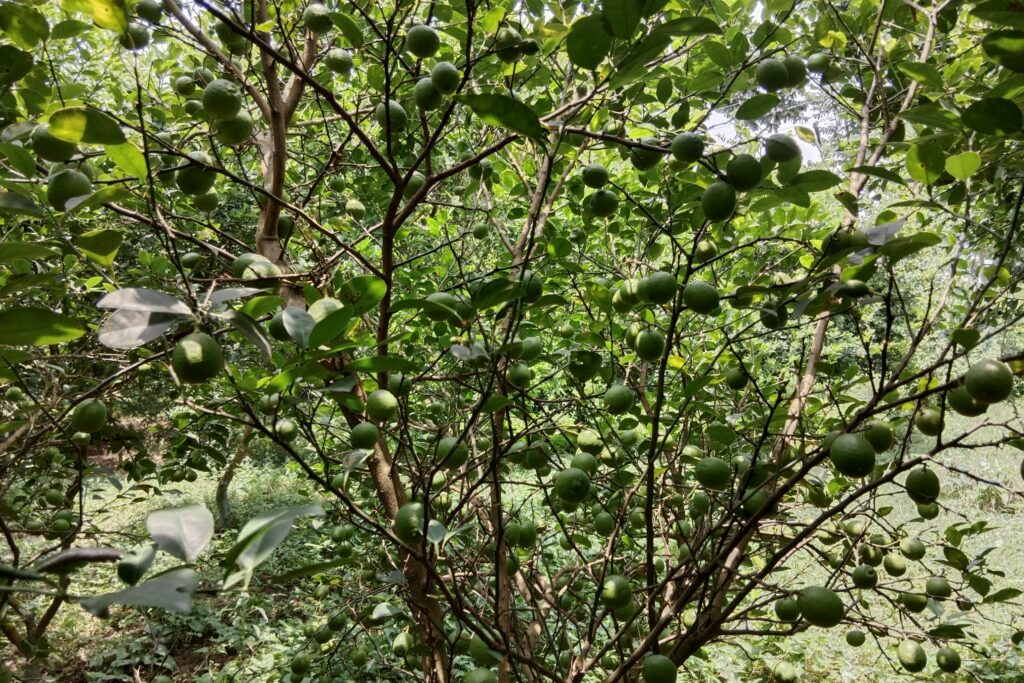Plum Farming
Plum farming offers an excellent profit potential per acre when proper techniques are followed, including careful land preparation, suitable soil selection, and climate-appropriate orchard management. As a highly nutritious fruit rich in Vitamin A, B-complex, calcium, phosphorus, and iron, plums have strong market demand both for fresh consumption and processed products like jams, squashes, and prunes. The plum farming profit per acre varies significantly based on planting density – low-density systems (160 trees/acre) require a modest NR. 303,000 initial investments but deliver sustainable NRs. 46,850 annual profits with 25+ year orchard life, ideal for smallholders.
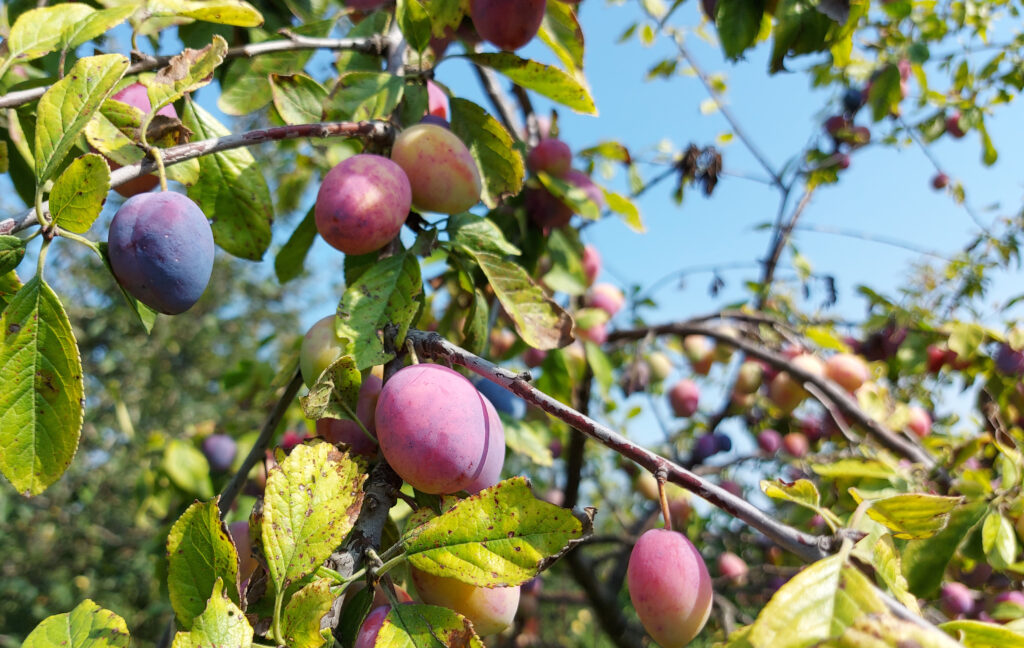
Commercial growers often prefer high-density planting (450 trees/acre) despite its higher NRs. 640,000 startup cost, as it generates greater plum farming profit per acre (NRs. 51,600 annually) and achieves breakeven 2-3 years faster, though requiring replanting after 15-20 years. This flexibility in production systems allows farmers to choose between long-term stability and accelerated returns based on their capital availability and business objectives. Below is a detailed guide on plum farming per Acre:
Land Preparation
The land must be cleared of weeds, rocks, and debris before undergoing two to three rounds of plowing and harrowing to achieve fine tilth. The land must also be leveled to avoid waterlogging, and soil testing should be done to identify any nutrient deficiencies for the best growth. Plums prefer deep, well-drained soil.
Soil Type
Because they encourage healthy root development and optimal nutrient uptake, plums thrive in loamy, well-drained soils that are high in organic matter. Because they contribute to increased yields, red lateritic soils with adequate drainage are especially well-suited for plum farming. In the slightly acidic to neutral spectrum (5.5–6.5), the optimal soil pH should fall between 5.8 and 6.2. By keeping pH levels in check, shortages can be avoided and improved nutritional availability is guaranteed.
Avoid thick clay soil, though, as they store too much water and result in inadequate aeration, which raises the danger of fungal infections and root rot. Waterlogged soil should also be avoided because they suffocate roots and hinder tree growth. Choosing and preparing the soil correctly is essential to starting a successful plum orchard.
Climatic Requirements
Plums thrive in temperate climates with an optimal temperature range of 18–25°C for growth, requiring 500–1000 chilling hours below 7°C (depending on the cultivar) to ensure proper bud break and fruiting. They prefer an annual rainfall of 700–1000 mm, though supplemental irrigation is necessary during dry spells to maintain consistent moisture. While temperate varieties grow best at altitudes of 800–2000 meters above sea level, plum cultivation can also succeed above 1200 meters, provided climatic conditions remain suitable.
Major Cultivars
Plum cultivation features a diverse range of cultivars, broadly categorized into European, Japanese, and hybrid varieties, each with distinct characteristics suited to different growing conditions and market preferences.
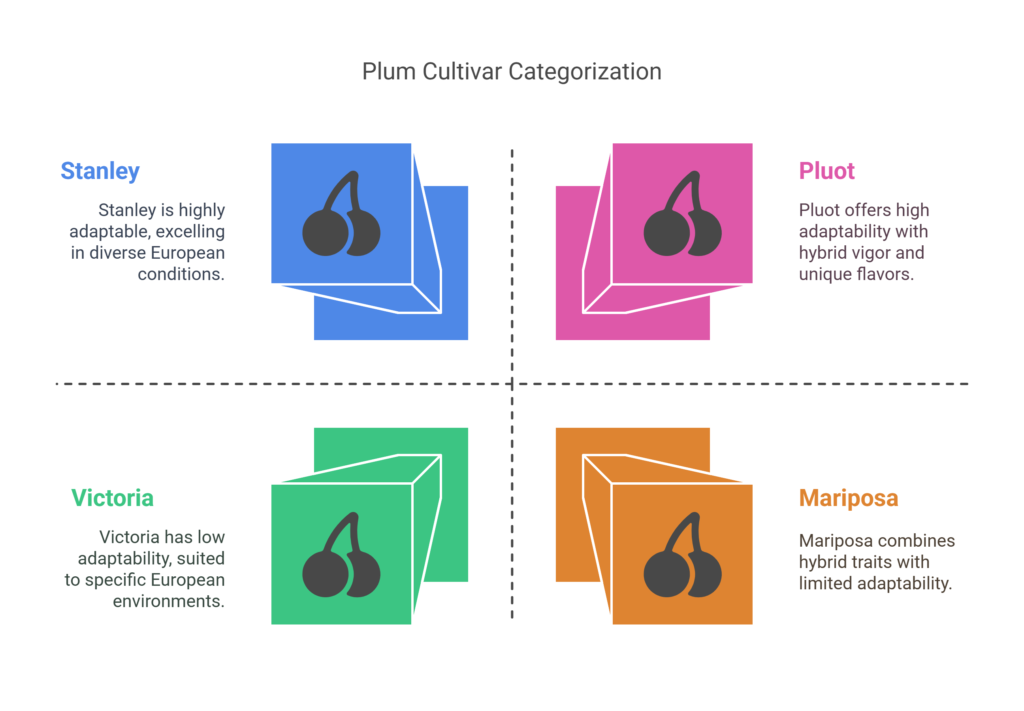
a) European Plum (Prunus domestica)
European plums (Prunus domestica) are prized for their sweet, firm flesh and versatility in fresh consumption, drying (particularly for prunes), and processing, with notable cultivars including Stanley—a high-yielding variety with deep purple skin and yellow flesh, excellent for both fresh eating and drying; President—a late-season plum with large, dark purple fruits, valued for its long shelf life and rich flavor; Bluefre—recognized for its uniform size, deep blue skin, and juicy flesh, making it ideal for fresh markets and canning; and Victoria—a classic British variety with yellow-red skin and sweet, tender flesh, often used in desserts and preserves.
b) Japanese Plum (Prunus salicina)
Japanese plums (Prunus salicina), known for their larger size, juicier texture, and earlier ripening compared to European varieties, offer a delightful tart-sweet flavor profile, with standout cultivars including Santa Rosa—one of the most popular varieties featuring red-purple skin and amber flesh, renowned for its exceptional taste and adaptability; Black Amber—a highly sought-after commercial plum with nearly black skin and sweet, firm flesh; Friar—a late-season favorite characterized by light purple skin and honey-sweet juiciness, prized for its large size and excellent storage qualities; and Red Beaut—an early-maturing variety with vibrant red skin and crisp, mildly acidic flesh, particularly well-suited to warm climate cultivation.
c) Hybrid Varieties
Hybrid plum varieties represent innovative crosses that blend desirable qualities from different species, creating distinctive flavors and textures. Among these, the Pluot (a plum-apricot hybrid) stands out for its exceptionally sweet taste and smooth texture, with plum traits being most prominent – popular varieties include Flavor King and Dapple Dandy. Another noteworthy hybrid is Mariposa, a Japanese-American freestone variety prized for its deep red, sugary flesh that makes it perfect for fresh consumption. These hybrids offer growers and consumers exciting alternatives that combine the best characteristics of their parent fruits.
Planting
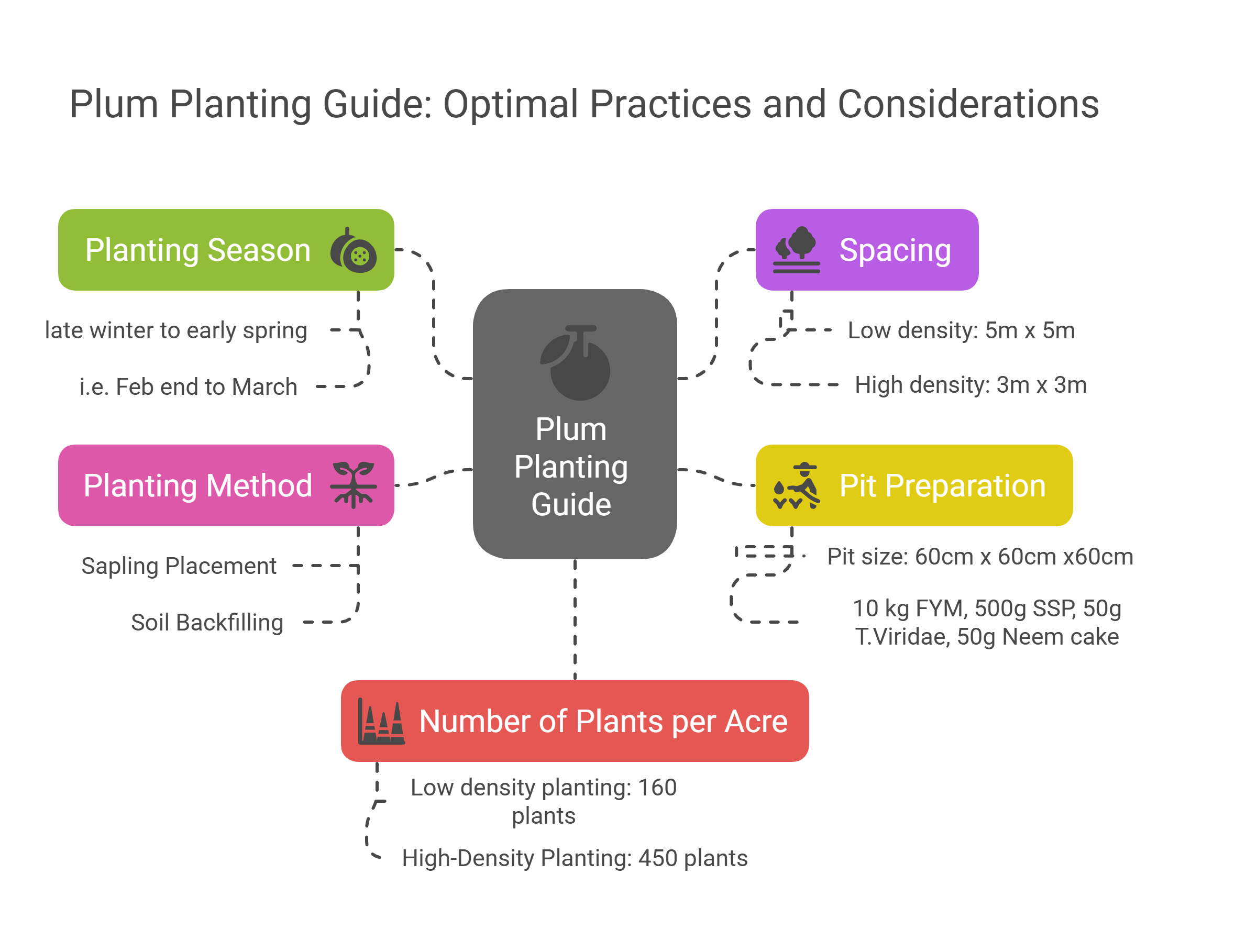
a). Planting Season
The ideal planting season for plums varies by climate: in temperate regions, late winter to early spring during the dormant season is optimal, allowing roots to establish before spring growth, while in subtropical areas, planting should occur after the monsoon season to avoid waterlogged conditions that could harm young trees.
b). Spacing
For optimal plum orchard management, spacing requirements vary depending on tree size: standard plum trees should be planted at 5m × 5m intervals for low-density planting to accommodate their mature canopy size, while dwarf varieties can be spaced closer at 3m × 3m for high-density planting systems that maximize land use efficiency.
c). Pit Preparation
For proper pit preparation when planting plums, dig 60 cm × 60 cm × 60 cm pits 2–3 weeks before planting to allow for soil aeration, then enrich each pit by thoroughly mixing the topsoil with 10–15 kg of well-decomposed farmyard manure (FYM), 500g of Single Super Phosphate (SSP), 50g of Trichoderma viride (a beneficial fungus for root health), and 50g of neem cake (to deter soil-borne pests and improve soil fertility), creating an optimal growth environment for the young saplings.
d). Planting Method
To avoid rotting and guarantee healthy growth, place plum saplings carefully in the middle of the prepared pit, keeping the graft union two to three inches above the ground. To help settle the soil and supply necessary moisture, backfill the pit with the enriched soil mixture after placing it, gently pressing it around the roots to remove air pockets. To give stability and guard against wind damage as the plant forms its root system, place stakes next to the sapling and tie it with soft ties in windy locations. This approach lessens transplant shock and encourages healthy growth.
e). Number of Plants per Acre
The number of plum trees per acre varies significantly depending on the planting system: with standard spacing of 5m × 5m accommodating approximately 160 trees per acre for full-sized varieties, while high-density planting at 3m × 3m spacing allows for about 450 dwarf trees per acre, enabling greater productivity from limited land while requiring more intensive management practices like pruning and trellising to maintain optimal growth conditions and fruit quality.
Intercropping
Intercropping in young plum orchards can optimize land use and provide additional income during the initial growth years. The most suitable intercrops include low-growing, nutrient-enriching plants like legumes (beans and peas), which fix atmospheric nitrogen, as well as garlic and onions that have minimal competition with young trees. Strawberries also make excellent intercrops as they have shallow root systems and benefit from partial shade. However, it’s crucial to avoid tall crops such as maize or sugarcane, which compete aggressively for sunlight, water, and nutrients, potentially stunting the plum trees’ growth.
This intercropping system should be strategically discontinued after 3-4 years when the plum trees’ canopy fully develops and begins to shade the ground extensively. At this stage, the competition for resources would negatively impact both the intercrops and the primary plum crop, making it more practical to focus on the orchard’s main production. Proper intercropping practices not only maximize early-stage profitability but also improve soil health through crop diversity during the establishment phase of the plum orchard.
Irrigation
Mature trees need thorough irrigation every two to three weeks, with drip irrigation being the best option for effective water delivery. Young plum plants should receive light irrigation often, every seven to ten days, to guarantee healthy establishment. Regular moisture must be maintained throughout fruit development to enable optimal growth, and water stress must be avoided during important growth stages like flowering and fruit sets to prevent flower and fruit loss. Reducing irrigation before harvest also improves fruit quality by minimizing cracking and increasing sugar content.
Plum Irrigation Schedule
| Growth Stage | Age of Tree | Frequency | Water Requirement (Per Tree) | Key Considerations |
| Planting to Establishment | 0–1 year | Every 5–7 days | 10–15 liters per irrigation | Ensure soil remains moist but not waterlogged. |
| Young Non-Bearing Trees | 1–3 years | Summer: Every 10–14 days, reduce in monsoon | 20–30 liters per irrigation | Deep watering encourages root development. |
| Pre-Flowering Stage | 3+ years | Winter: every 2–3 weeks, Summer: Weekly | 40–60 liters per irrigation | Maintain soil moisture before flowering. |
| Flowering & Fruit Set | 3+ years | Every 7–10 days | 50–70 liters per irrigation | Avoid water stress to prevent flower/fruit drop. |
| Fruit Development | 3+ years | Every 10–14 days | 60–80 liters per irrigation | Consistent moisture improves fruit size. |
| Pre-Harvest (Ripening) | 3+ years | Reduce to every 15–20 days | 30–50 liters per irrigation | Less water improves sugar content & prevents cracking. |
| Post-Harvest | 3+ years | Every 3–4 weeks | 40–60 liters per irrigation | Helps tree recover and store nutrients. |
| Dormant Stage (Winter) | 3+ years | Only if severe drought | 20–30 liters (if needed) | Overwatering in dormancy can harm roots. |
Fertilizer and Manure
a). Basal Dose (At Planting)
At the time of planting, a basal dose should be applied to each pit, consisting of 10–15 kg of well-decomposed farmyard manure (FYM), 500 grams of single super phosphate (SSP), 50 grams of neem cake (to deter pests and improve soil health), 50 grams of Trichoderma viride (a beneficial fungus for disease suppression), and 50 grams of biofertilizers (including nitrogen-fixing bacteria, phosphate-solubilizing bacteria (PSB), and potash-mobilizing bacteria) to enhance nutrient availability and promote healthy root development. This combination ensures a nutrient-rich foundation for young plum trees, fostering robust early growth while improving soil structure and microbial activity.
b). Annual Fertilizer Application (Per Mature Tree)
| Tree Age (Years) | FYM (kg) | Urea (g) | SSP (g) | MOP (g) | Additional Notes |
| 1-2 | 10-15 | 200-300 | 500 | 150 | Apply FYM in winter; chemical fertilizers in split doses |
| 3-5 | 20-25 | 400-500 | 750 | 300 | Increase doses as tree grows; maintain 2:1 NPK ratio |
| 5+ (Mature) | 30-40 | 600-800 | 1000 | 500 | Adjust based on soil tests and yield performance |
c). Split Application
The fertilizer application should be split into two doses: the first dose (applied pre-flowering) should consist of 50% of the nitrogen (N), 100% of the phosphorus (P), and 50% of the potassium (K) requirements, while the second dose (applied post-fruit set) should include the remaining 50% of nitrogen and 50% of potassium to support fruit development and tree growth. This split application method ensures optimal nutrient availability during critical growth stages, with phosphorus fully supplied early to promote flowering and root development, followed by balanced nitrogen and potassium to sustain fruit expansion and quality.
Weed Control
Managing weeds in plum orchards effectively requires a combination of mulching, mechanical weeding, and careful herbicide use. For persistent weeds, post-emergence herbicides like glyphosate can be applied carefully with targeted application to prevent contact with the tree trunk or foliage, ensuring safe and effective weed control; regular shallow hoeing for mechanical weeding helps control weeds without damaging surface roots (deep tillage must be avoided to prevent root injury); and organic mulch, such as straw or dry leaves, should be spread around trees to inhibit weed growth while preserving soil moisture.
Pest and Disease Management
Major Pests
a). Crown Borer
The crown borer, a moderate pest of plum trees (also affecting apricot, nectarine, and peach), is the larval stage of a clearwing moth that emerges in late June to lay eggs near tree trunks and upper roots. The larvae tunnel beneath the bark at the soil line, causing girdling that can kill trees, with visible signs including oozing sap mixed with frass, canopy dieback, loose bark, and leftover pupal cases. Effective management involves keeping the trunk base weed-free, applying monthly preventive sprays (permethrin or carbaryl) from July to September on the lower 12–18 inches of the trunk, or using organic options like spinosad (every 10 days) or beneficial nematodes—consult local extension services for nematode guidance.
b). Peach Tree Borer
Significant pests of plums and apricots are the peach tree borer (Synanthedon exitiosa) and lesser peach tree borer (Synanthedon pictipes). Their larvae feed on inner bark, which can girdle and kill plants or cause bark peeling, which is sometimes accompanied by considerable gumming. The adult borers are steel-blue, yellow-orange-marked, clearwing moths that are active throughout the day and resemble wasps.
c). Plum Curculio
The plum curculio damages fruit through direct feeding, egg-laying (where larvae tunnel inside fruit), and by spreading brown rot. After mating, females bore a hole in developing fruit to deposit an egg, then make a distinctive crescent-shaped cut beneath it to prevent the egg from being crushed as the fruit grows. Infested fruits typically drop prematurely before the larvae finish feeding, leading to significant crop loss.
Major Diseases
a). Crown Rot and Root rot
Fruit trees all around the world suffer from crown and root rot, which is brought on by the soil-borne disease Phytophthora. It grows best in moist soils and infects vulnerable trees, once it has taken hold. Stunted growth, yellowing leaves, undersized fruit, wilting, dieback, and abrupt death are some of the symptoms; brown discoloration beneath the bark indicates an infection. Plant in well-drained locations, refrain from replanting in affected areas, and use phosphorous acid to prevent root-to-root spreading to neighboring healthy trees.
b). Perennial canker
Perennial canker (Cytospora canker), a fungal disease of low-moderate concern in plums (also affecting apricot, cherry, nectarine, and peach), manifests as oval, sunken cankers with dark amber gum on branches and stems, progressing annually in wet weather through wounds or weak tissue. Symptoms include gummosis, dead branches, and loose bark, with diagnosis confirmed by brown discoloration under scraped bark. Management involves preventing bark injuries (using winter tree wraps, avoiding mechanical damage), controlling wood-boring insects, and pruning infected branches at least 4 inches below visible canker margins into healthy (cream-colored) wood.
c). Plum Pox Virus (PPV)
Plum Pox Virus (PPV), a serious disease affecting stone fruits, requires immediate removal and destruction of infected trees to prevent spread, along with planting certified virus-free saplings to establish healthy orchards, as there is no cure once trees are infected.
Harvesting
Plum trees typically begin bearing fruit 3–5 years after planting, reaching full commercial yields by 6–7 years, with harvest seasons varying by cultivar: early varieties (May–June), mid-season (June–July), and late varieties (August–September). Mature fruits show readiness through slight softening, cultivar-specific color changes, and easy stem separation. Yield ranges from 15–25 kg per young tree to 50–100 kg per mature tree, depending on variety and cultivation practices.
Post-Harvest Handling
After harvesting, plums undergo grading to ensure uniformity, where they are sorted by size, color, and quality to meet market standards. For short-term storage (2–4 weeks), plums should be kept at 0–1°C with 90–95% humidity to maintain freshness and prevent shriveling. For long-term preservation, plums can be processed through canning, drying (to produce prunes), or freezing, which extends shelf life while retaining nutritional value. Proper post-harvest handling minimizes spoilage and maximizes marketability.
Cost of Investment for One Acre Plum Farming
| S.N. | Categories | Low-Density (160 Plants) | High-Density (450 Plants) | Remarks |
| 1 | Land Preparation (Plowing, Pit Digging) | 40,000 | 60,000 | High-density requires more pits |
| 2 | Plum Saplings | 48,000 | 135,000 | Dwarf varieties costlier |
| 3 | Fertilizers & Manure | 60,000 | 180,000 | Higher nutrient demand in HDP |
| 4 | Drip Irrigation Setup | 75,000 | 150,000 | Precision watering critical for HDP |
| 5 | Labor (Planting + Maintenance) | 30,000 | 45,000 | More pruning/thinning in HDP |
| 6 | Pest & Disease Control | 30,000 | 40,000 | Dense planting increases pest risk |
| 7 | Miscellaneous (Mulch, Tools) | 20,000 | 30,000 | – |
| Total Initial Investment | NRs. 303,000 | NRs. 640,000 | HDP costs 2.1× more |
Annual Maintenance Cost (NRs.)
The annual maintenance cost for plum orchards in Nepal, applicable from the second year onward, ranges between NRs. 100,000 to 150,000 per acre for both low-density (160 plants/acre) and high-density (450 plants/acre) planting systems, covering essential expenses such as pruning, fertilization (organic/inorganic), irrigation management, pest/disease control (pesticides, fungicides), labor for weeding and fruit thinning, and occasional soil amendments—with high-density orchards typically incurring the upper range of costs due to intensive canopy management, higher fertilizer demands, and increased pest monitoring to maintain optimal productivity in densely planted trees.
Income from One Acre Plum Cultivation
| Year | Low-Density Yield | High-Density Yield | Rate (NRs. /kg) | Low-Density Income | High-Density Income |
| 3rd | 200 kg | 800 kg | 80 | 16,000 | 64,000 |
| 4th | 800 kg | 2,500 kg | 80 | 64,000 | 200,000 |
| 5th | 2,000 kg | 5,000 kg | 80 | 160,000 | 400,000 |
| 6–7 | 4,000 kg | 8,000 kg | 100 | 400,000 | 800,000 |
| 8–15 | 8,000 kg | 12,000 kg | 100 | 800,000 | 1,200,000 |
| 16–20 | 6,000 kg | 9,000 kg | 150 | 900,000 | 1,350,000 |
| 21+ | 4,000 kg | Replanted | 200 | 800,000 | – |
Analysis of Plum Farming Profit Per Acre
a) Low-Density Planting
For low-density plum planting (160 trees/acre), the total 20-year investment sums to NRs. 2,203,000, comprising an initial NR. 303,000 setup cost and NRs. 1,900,000 in maintenance (NRs. 100,000 annually for 19 years). Over this period, the system generates NRs. 3,140,000 in gross income, yielding a net profit of NRs. 937,000, which translates to a steady average annual profit of NRs. 46,850 per acre—making it a lower-risk, sustainable option for farmers prioritizing long-term orchard viability over immediate high returns.
b) High-Density Planting
High-density plum planting requires a greater upfront investment of NRs. 640,000, with NRs. 2,100,000 in maintenance costs over 14 years (NRs. 150,000 annually) and an estimated NR. 500,000 for replanting in year 16, bringing the total 15-year investment to NRs. 3,240,000. Despite higher costs, this system generates NRs. 4,014,000 in gross income, resulting in a net profit of NRs. 774,000 and a higher average annual profit of NRs. 51,600 per acre compared to low-density planting—making it ideal for farmers seeking faster, more intensive returns, though it requires replanting after 15–20 years due to declining yields.
High-density plum cultivation offers two key advantages: it generates 10% higher annual profits (NRs. 51,600 vs. NRs. 46,850 in low-density systems) and achieves faster cost recovery, breaking even by years 6–7 compared to 8–10 years for low-density planting. On the other hand, low-density orchards present lower financial risk with 40% reduced initial investment and longer-term sustainability, as they remain productive for 25+ years without replanting. For commercial growers prioritizing short-term returns, high-density is ideal, while small-scale farmers benefit more from low-density planting due to its lower costs and extended orchard lifespan.
